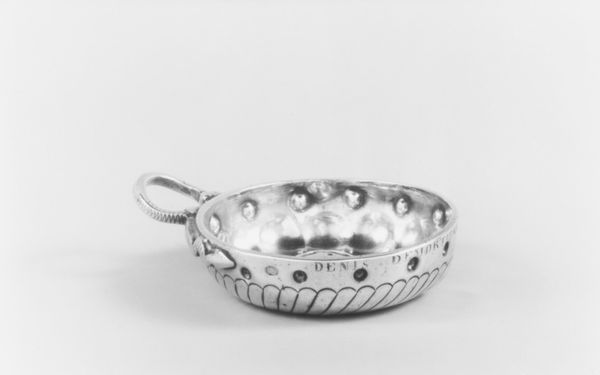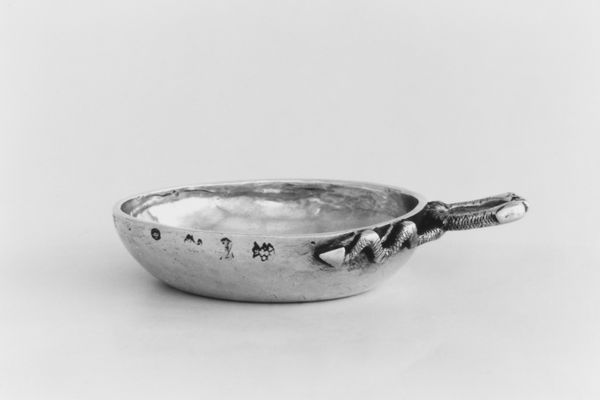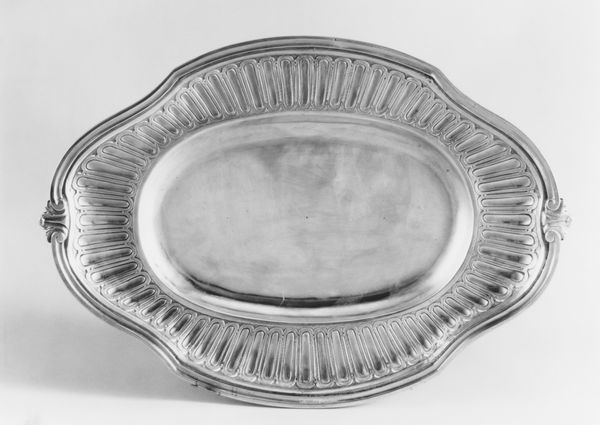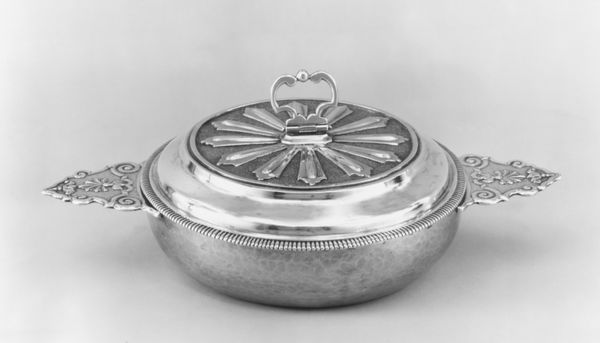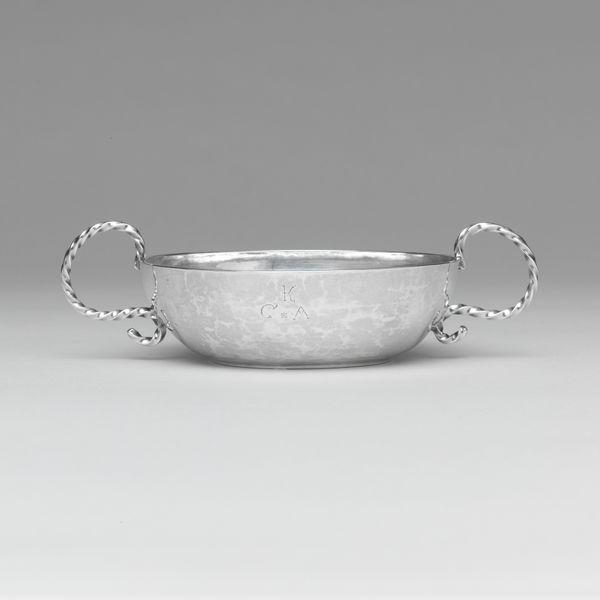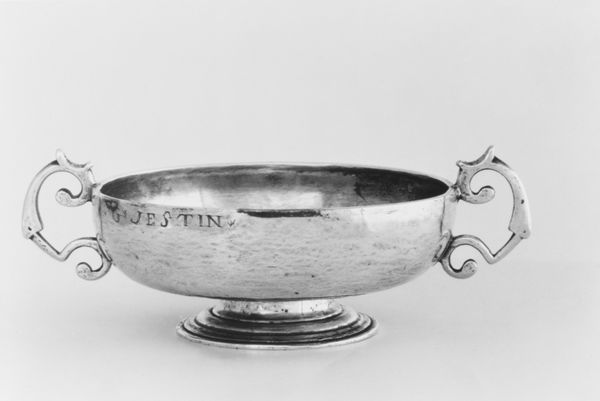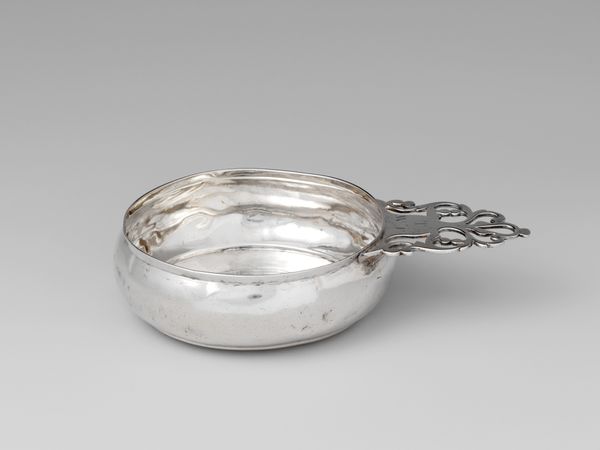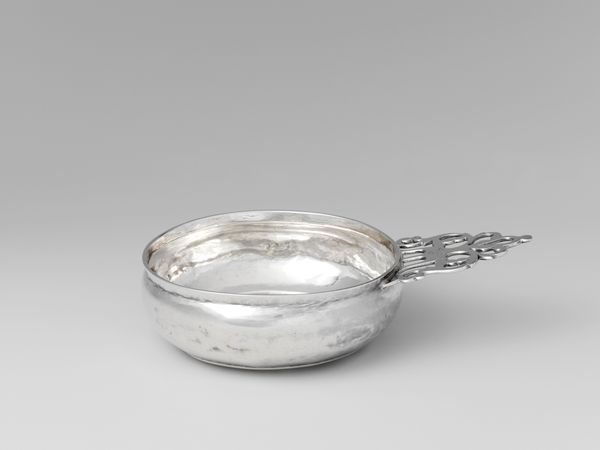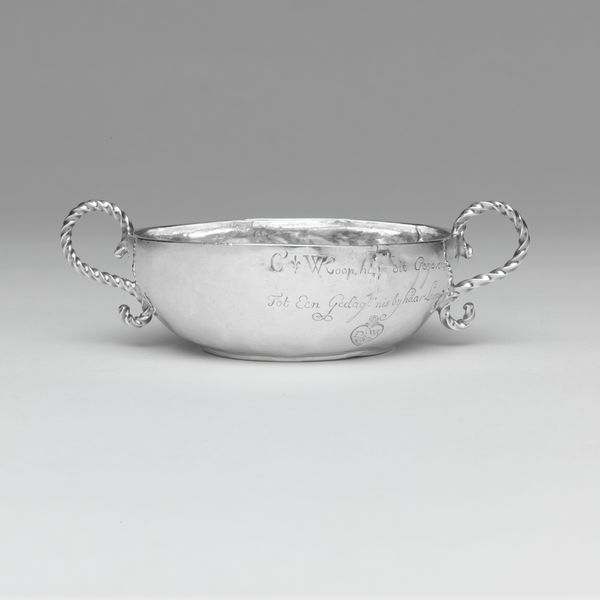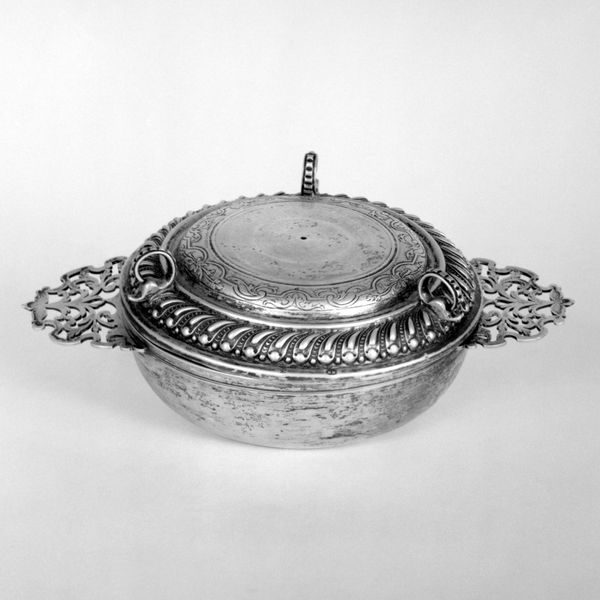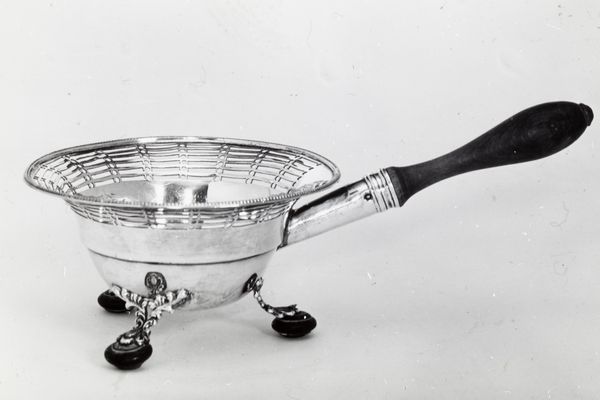
silver, metal, ceramic, sculpture
#
silver
#
baroque
#
metal
#
ceramic
#
sculpture
Dimensions: Overall: 1 1/4 × 4 1/2 in. (3.2 × 11.4 cm)
Copyright: Public Domain
Curator: Here we have a Baroque silver wine taster, created by Jacques Hanappier sometime between 1758 and 1760. It is currently held in the collection of the Metropolitan Museum of Art. Editor: It’s smaller than I imagined, almost delicate, with its subtly fluted bowl and elegant handle. It appears quite meticulously crafted, I’d wager this involved some serious silversmithing skill. Curator: Absolutely. Wine tasters like this were vital tools. Think of the 18th-century wine merchant navigating cellars. The reflective surface of the silver helped them see the wine's color and clarity even in dim lighting, assessing its quality. It’s function dictates form. Editor: It makes one consider the specific labour involved: mining, refining, shaping... A highly crafted item like this really highlights the social and economic system that supports such luxury. Was the material sourced locally or traded? Who benefitted, and at whose expense? Curator: These are pertinent questions! During this period, sumptuary laws were becoming less rigid, meaning objects like this became more common among a rising merchant class eager to display wealth. And guilds strictly regulated silversmithing to ensure quality, influencing its design. Editor: So it's not merely an object of beauty, but an indicator of evolving social dynamics and labour practices. What sort of wine would have graced it, and at what kind of table? This really gets at how social class dictates how things are made, viewed, and, in this case, drunk from. Curator: Precisely. Each curve and carefully placed mark represents choices rooted in specific social and economic contexts. This piece exemplifies the baroque style's penchant for opulent, functional items intended for a burgeoning consumer class. Editor: Seeing the labour embodied here has altered my appreciation for this relatively simple piece. A whole network of makers, materials, and consumers condensed in one small bowl. Curator: It's a powerful reminder that even everyday objects have complex and intriguing stories deeply entwined within the social fabric of their time.
Comments
No comments
Be the first to comment and join the conversation on the ultimate creative platform.
